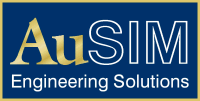

|
| Home < About AuSIM < Technology < Glossary < P-R | ||||
Glossary [P-R] Terminology of Sound |
||||
| Pinnae The part of the human ear that is external to the head, composed primarily of skin and cartilage. |
||||
| Propagation Medium Any compressible or deformable substance, which pretty much describes all things on earth. The molecular makeup of a substance defines its capability to propagate sound. While air and water are the most commonly mentioned sound propagation media, they are simply the most abundant substances on our earth's surface. The density and compressibility of air and water are such that they change the characteristic of sound very little as sound waves propagate through them. Steel is a relatively incompressible medium; a decimeter thick wall is pretty much a barrier to sound propagation. However, a millimeter thick membrane is deformable and thus able to transfer compression in the medium on one side to the medium on the other. The deformation of the membrane is transient and thus propagates across the membrane causing residual compressions in the media on both sides of the membrane. The result is that as a propagation medium steel changes the characteristics of sound greatly. |
||||
| Psychoacoustics An area of psychology that studies the structure and performance of human auditory perception. |
||||
| Quadraphonic Sound Refers to four audio signals, usually rendered on four separate speakers. Quadraphonic sounds appear to originate from somewhere in-between the four speakers. The inconvenience associated with the amount of equipment necessary to produce quadraphonic sound, coupled with the fact that it is not compatible with conventional stereo equipment (and therefore headphones), makes quadraphonic sound an unpopular choice. |
||||
| Radiation Pattern Each sound-emitting object can optionally radiate sound in a certain pattern (rather than uniformly all around it). For example, a head should emit sounds in the direction that its nose is pointing. |
||||
| Reflection A sound reflects (bounces) off a surface. It gives a listener information about the listening environment and the location and motion of sound sources. See also "surfaces". |
||||
| Refraction Sounds waves refract, or bend, as they travel around the edges and through openings of objects. |
||||
| Reverberation Refers to the sum of all sound reflections in a listening environment. Oftern shortened to "reverb" |
||||
|
|
||

|
[Home] [About AuSIM] [Products] [Services] [Applications] |
|
| [Support] [Contacts] [Buy Online] [Downloads] [News & Events] | ||
| © AuSIM Inc. 1998-2011. Last updated on | ||